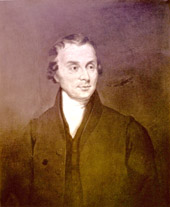|
|
|
In 1803 a chemist and amateur meteorologist called Luke Howard proposed a system for naming clouds. His pioneering work came from his curiousity into the vivid sunsets in the late 18th century following a series of violent volcanic eruptions. They had ejected dust high up into the atmosphere, giving lots of particles for water vapour to condense around, and producing spectacular cloud formations and sunsets. Howard recognised four types of cloud and gave them the following Latin names: Cumulus = heaped or in a pile Stratus = in a sheet or layer Cirrus = thread-like, hairy or curled Nimbus = a rain bearer If we include another Latin word altum meaning height, the names of the ten main cloud types are all derived from these five words and based upon their appearance from ground level and visual characteristics. The cloud types are split into three groups according to the height of their base above mean sea level. Note that 'medium' level clouds are prefixed by the word alto and 'high' clouds by the word cirro. |

Click here to see a cloud chart, showing the different kinds of cloud. Use the Back button in your bowser to get back here. |